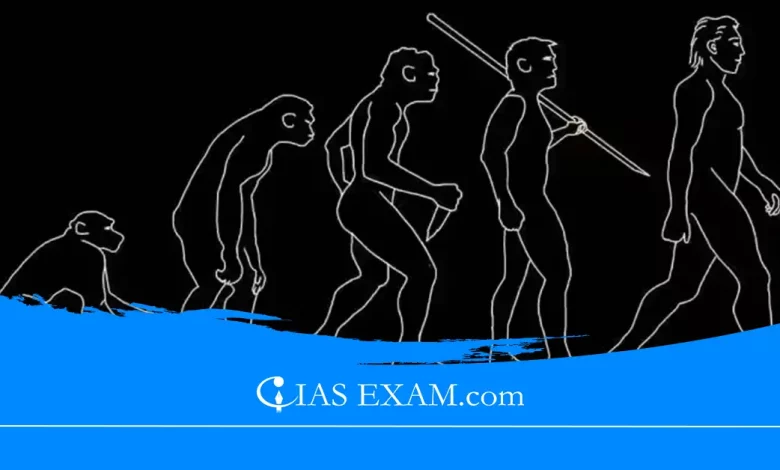Daily Current Affairs for UPSC
Tailless Evolution in Humans
Syllabus- Science and Technology [GS Paper-3]

Context
Scientists have recently studied about the genetic mechanism behind the tailless evolution in humans and apes about 25 million years ago.
Cause of the evolution
- Gene TBXT: The gene TBXT is involved with tail length in certain animals. The gene was missing in humans, no longer due to mutation, however by another genetic code “snippet” known as AluY.
- Snippet AluY: It was randomly inserted into early human and non-tailed apes during prehistoric times. The new gene was proven to affect tail lengths.
- AluY snippets are also known as “jumping genes” or “cell factors” because they could circulate around and insert themselves again and again and randomly in human code.
- TBXT + AluY Snippet: When paired with TBXT, it formed two varieties of ribonucleic acid – important to cell structure – that produced tail loss in humans and apes.
Functions served through Tail
- For many vertebrates, a tail has helped with functions like locomotion.
- They help creatures of a wide variety preserve balance as they pass throughout different environments.
- Tails additionally act as a communication tool, allowing animals to send indicators to every different at some point of social interactions.
- In some species, tails are even essential for regulating frame temperature or defending themselves in opposition to threats.
Present Hominoids
- They include humans, the great apes – chimpanzees, bonobos, gorillas, orangutans – and the lesser apes – gibbons.
- The earliest-known hominoid, called Proconsul, was tailless.
- Traces of a tail continue to be in human beings: A bone at the bottom of the spinal column known as the coccyx, or tailbone, is shaped from fused remnants of tail vertebrae.
Benefits of a Tailless Existence
- Freed from the constraints of a tail, humans evolved enhanced balance and mobility, crucial for bipedalism.
- This edition facilitated a more upright posture, taking into consideration the use of fingers in device-making, foraging, and social communique.
- The evolutionary fulfillment of human beings and apes without tails underscores the benefits of this trait in navigating the terrestrial and arboreal environments they inhabited.
- Significance: The lack of the tail isn’t always just a matter of bodily appearance however signifies a deeper evolutionary strategy, adapting to new environments and methods of shifting.
- This study sheds light on how evolution affects each of our body features and risk of certain health problems.
- This new manner of questioning opens doorways for similar research into the genes and evolutionary history of diseases.
Source: Indian Express
UPSC Mains Practice Question
Q.“Archaic gene sequences from extinct relatives influence the physiology of present-day humans.” In view of the statement, explain how Genome and genome sequencing is significant for the human race? (250 words)





.png)



